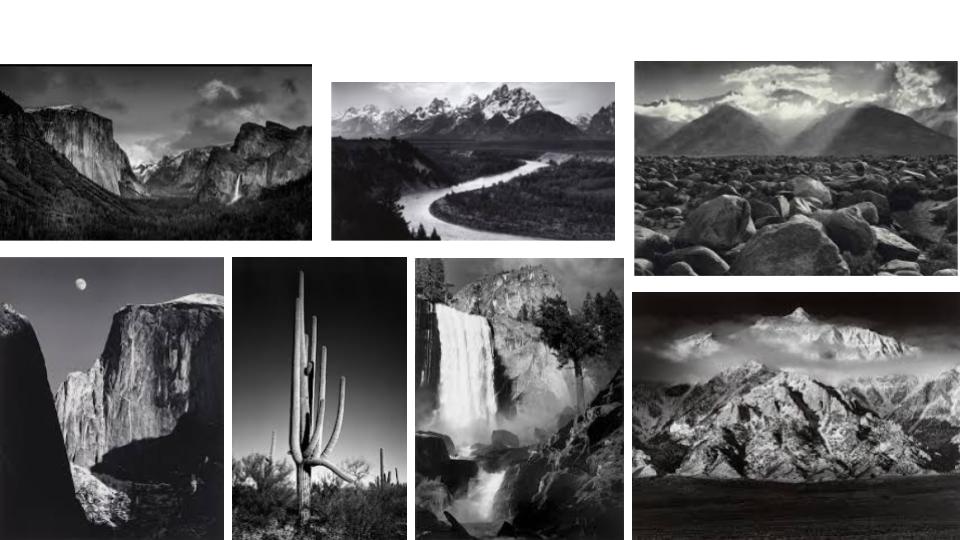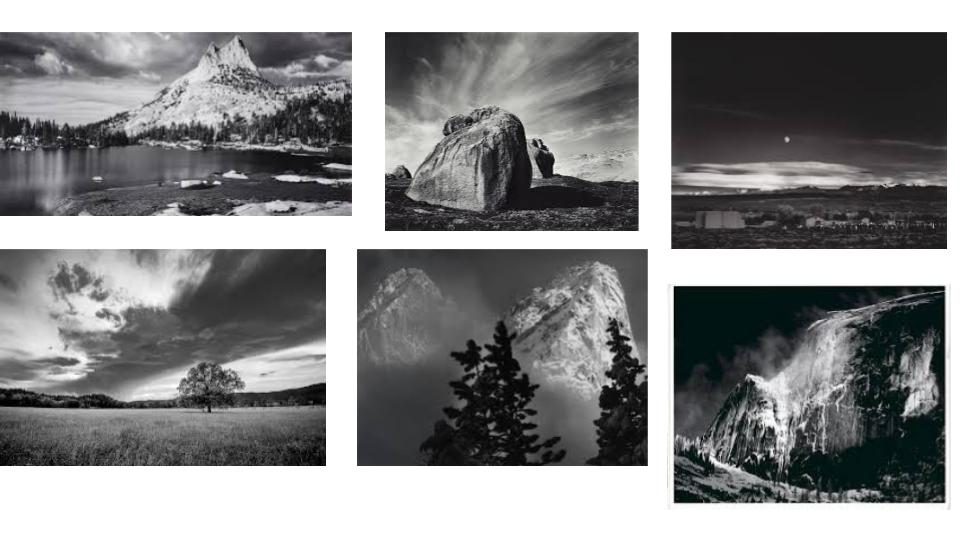Ansel Easton Adams (born in 1902 – 1984) was an American landscape photographer and environmentalist known for his black-and-white images of the American West. These black and white images had high tonal range which emphasized the landscape to loo unnatural and intriguing. His love for nature and the earth in general is what started off Ansel’s career. He had an eye, a vision of what he exactly wanted his photographs to look like when visiting an area of either West Americas mountain ranges or the vast landscape in the countryside. Here are some examples of Ansels work…


As we can see, Ansel Adams loves to use a lower exposure camera setting for most of his photography. This creates an effect of his images looking like they are taken at night. They seem to be all photographed at the same mountain range but different angles as well as some flat surfaces with some abstract shapes and tonal range in the skies. They all have a similar style to them but all seem to have something as an objective. Either that being a tree, rock, mountain or lake, they all relate to each other somehow. Especially that they are taken in black and white.
Analysis

In this particular image at first glance the noticeable peaks of mountains captures my eye as for the contrast in the snowy white tips to darkness that falls half way down. As well as this, the striking river that seems to flow in an S shape has a bright, outstanding white glimmer to it. The harsh light source from the sun above and the fact that this picture has been taken in black and white has made this river of water over exposed as it appears to be the same brightness as the sun which is positioned outside the image, the top middle of the frame. Different shades of grey make up the trees surrounding the river that weaves in and out. Its almost as if its a source that leads out to the mountains, a path like way. Mist seems to overcast the mountains and tops of trees in the near distance. We can see this because of how the image is formed. The white dust that subtly over-layers the darker shades of grey. The growth of the mountains seems intriguing as from the side of the photographs, the mountains grown to a single, unstable peek. This peak seems to be rough but kinda grows out of the images view. This really emphasizes the height and bigness of these landmarks in West America. The trees in the foreground closest to the left side of the image carefully lines up with the lining of the bottom of the mountains. This creates a tonal range of dark to light, black to white and makes it much more easier to examine the mist. Dotted and light clouds are positioned in the sky that seem bearable to notice. The way Ansel has set his exposure, he has made a darker and shaded sky in the fr left and right top corners. This effect makes the image as if it was taken in the night. Whereas is was indeed not, as for the lighting needed to even view the landscape in daytime. The dark and shaded parts of this image overalls the white highlights. The darkened areas seem to fall mostly from the bottom, and stretching upwards to light and brightness. The river seems to be the objective of this image. This is because it has been angled to be photographed in the center of the image and is the brightest, strong and smoothed out area. The lining in this image ranges from smooth lines found along the river and banks, to rough, sharp and edgy lines that form the mountains and trees. over all this image in interesting to view as there seems to be some sort of story or beauty that is being expressed. Dark and light elements contrast with each other to form a beautiful, landscape image.
